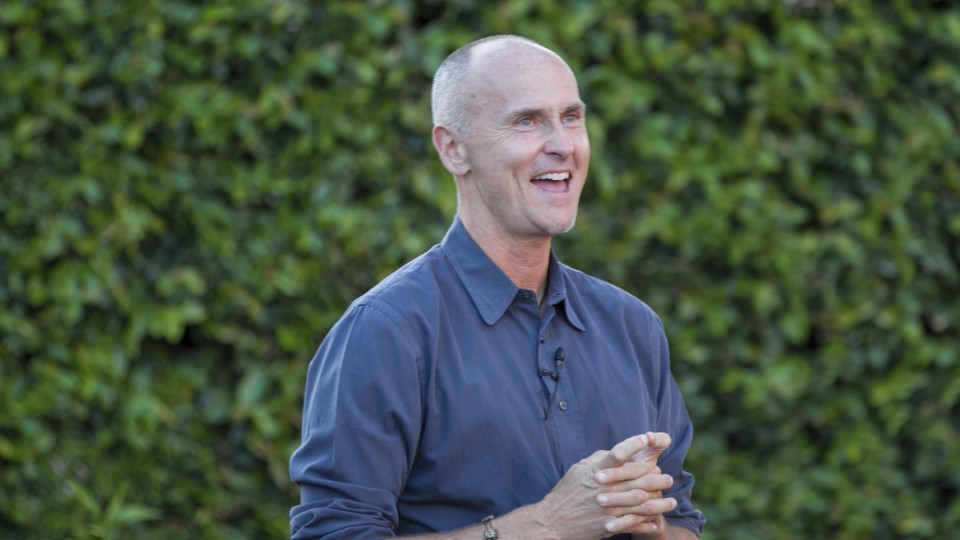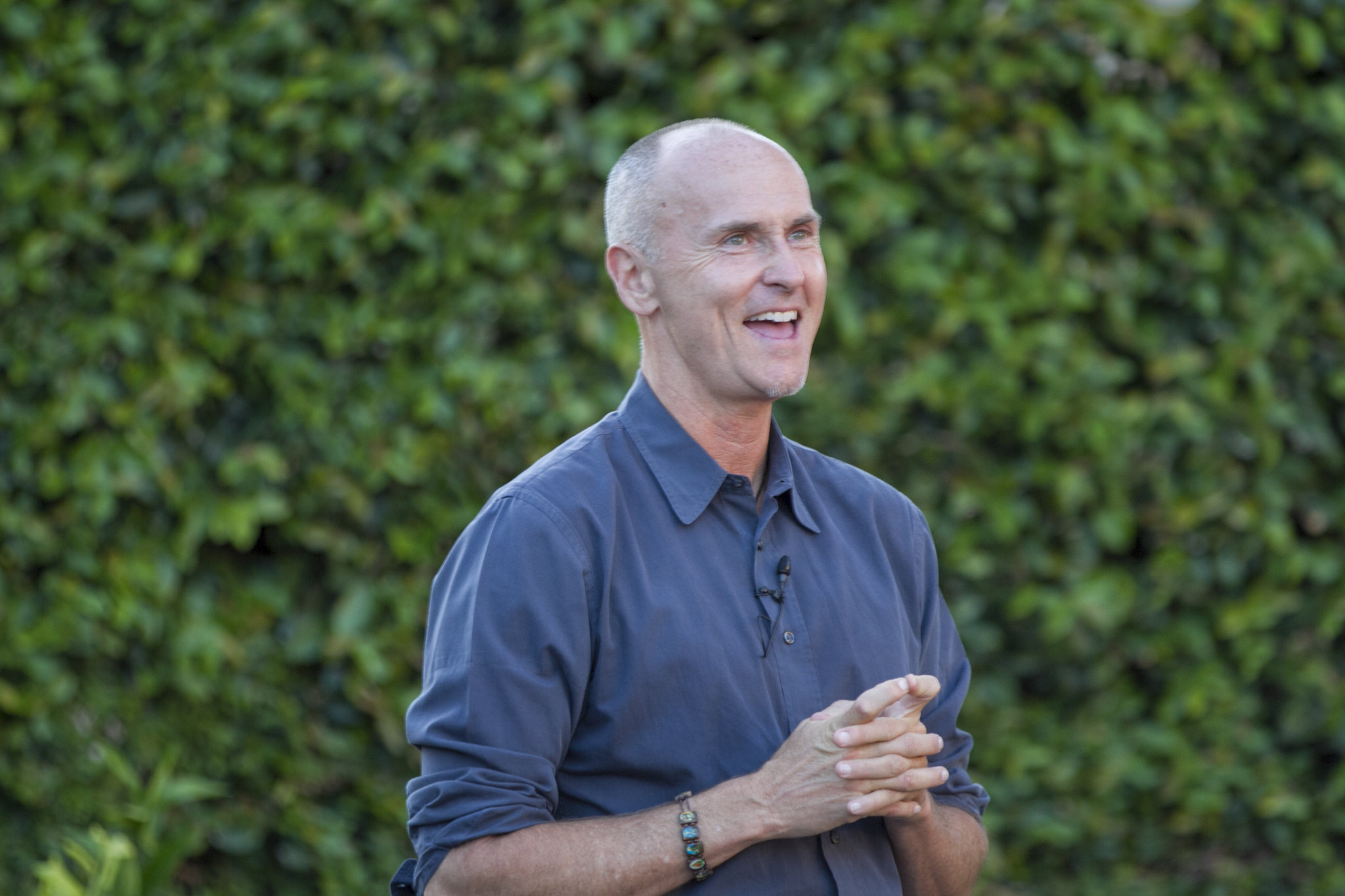
15 Nov2017

share



In the 10 years since the first edition of Peak introduced Chip’s powerful strategy, it has been adopted by organisations spanning six continents in just about every industry, including the global hospitality disruptor and influencer, Airbnb.
Whether you were able to join the Webinar or not you can watch the video by clicking the image above. You will also find further information about Chip Conley, PEAK and his eight Leadership Practices.
Chip Conley is the founder and former CEO of America’s Joie de Vivre Hospitality and Strategic Advisor for Hospitality and Leadership at Airbnb. Entrepreneur, disruptive business rebel, and social change agent, he is the New York Times bestselling author of Emotional Equations and a recipient of the hospitality industry’s highest honour, the Pioneer Award. In the 10 years since the first edition of Peak introduced Chip’s powerful strategy, it has been adopted by organisations spanning six continents in just about every industry, including the global hospitality disruptor and influencer, Airbnb. The Revised and Updated edition of the celebrated guide to inspiring and enabling human potential reintroduces today’s business leaders to the Peak approach through its most recent advances and success stories. Everyone – from start-up entrepreneurs to managers at Fortune 500 companies – can readily apply the actionable principles inside to not only unlock their own potential but also all the greatness in those around them. By tapping into the psychology behind Abraham Maslow’s hierarchy of needs, the Peak effect empowers all your relationships – at work and at home.
The WondrAcademy is the name we give to the range of research, development and testing work we do and have done in-over the past few years. The WondrAcademy is a place where people come to learn and share ideas and experiment, because, like them, we believe that collaboration is at the heart of all great work. Like them we want to inspire fresh, creative excellence and share knowledge: http://www.imediagroup.co.uk/the-wondr-academy/
Practice doesn’t make perfect, but it does make public a commitment to PEAK principles. And, after 10 years of seeing companies utilize PEAK, I’ve come to realize that business principles are only as good as the practices that back them up…and the leaders who exhibit them.
When a company embeds these principles and practices into how they grow their leaders, the end result is PEAK performance: a phenomenon of sustained growth – both for the organization and for those within it.
While each practice can stand alone, when combining them together a PEAK leader unlocks the human potential that’s stored in every organization or team so that PEAK performance is more likely.
I’ll summarize these practices very briefly. Of course, the new edition goes into each practice in more depth with specific habits and tools you can incorporate into your leadership.
PEAK principles have their roots in humanistic psychology and a basic belief that man is meant to “be all that he can be.” So, it’s not surprising that the fundamental first practice is assuring that a PEAK leader believes that humans – at their very core – gravitate to goodness when the right conditions exist for them to flourish.
Abe Maslow wrote, “One can set up the conditions so that peak experiences are more likely, or, one can perversely set up the conditions so that they are less likely.” Great leaders understand there are only three relationships you can have with your work: a job, career, or calling. Great companies create the conditions for employees to live their calling and great leaders understand each of their employees well enough to curate individual work experiences for, at minimum, their direct reports to help them elevate their work to that of a calling. The PEAK leader also asks questions like this one, “As I make any significant operational or strategic decision for the company, who on my team will be most affected by this decision, what is the potential collateral damage that could arise out of this decision, and how can I mitigate it if I am going to pursue this path?”
In business, we’re taught that leadership is all about managing what you can measure. But, what’s most valuable in life and business is often the intangible, which is harder to measure. The metrics that track the business tangibles are well known: your profitability, your cost structure, and your market share. Yet, these tangible metrics are the result of a series of intangibles that drive excellence: brand loyalty and reputation, employee engagement, customer evangelism and word of mouth, ability to innovate and create intellectual capital, or company culture. These intangibles are the inputs that truly drive the tangible output most companies use to evaluate their performance. At Airbnb, our recruiting team tracks the number of online applicants to jobs available each year as a means of understanding our popularity as an employer. This popularity index grew by more than 50 percent in 2016 after the company won the award – overtaking Google – in 2015 for being the best place to work (according to the anonymous online employee review site, GlassDoor). Other companies track unique metrics like the percentage of employees involved in company philanthropic activities, or the percentage of employees referring friends or family to work in the company (with no financial bounty attached), as a means of evaluating the intangible of employee engagement.
Transactional leaders lead from the bottom of the pyramid, while transformational leaders lead from the top. Most management decisions require only transactional thinking because the goal is purely to optimize existing resources. But, in an era of constant change, transformational leaders visualize potential and actualize it into reality and know when they need to shift from the bottom of the pyramid to the top in terms of their focus. If you tend to operate in a visionary way, make sure to always do a spot-check around buy-in. Especially with those who are most operationally involved with executing this vision. Can they link their reality to what the company is trying to do transformationally? Be sure to ask what they need to help them succeed.
Great leaders know that company culture is their secret weapon, that it needs to be nurtured and valued, and must evolve with the times. It takes years to create a compelling culture, yet you can lose it with just a few bad decisions. The most valuable lesson in this practice is to become more conscious about what constitutes your current culture and what steps you can take to move that in the direction most appropriate for your long-term corporate goals. As Airbnb cofounder Joe Gebbia says, “The more you have a vibrant culture that everyone buys into, the less process you need in the org.” Airbnb’s investment in culture takes many forms. There’s a collection of “core values interviewers” who do their normal jobs in various departments of the company – from engineers to lawyers – but are also trained to interview new candidates for their core value fit with the company. There’s also a Core Values Council that considers business issues that arise that may be at odds with the core values of Airbnb. Airbnb’s biggest investment in culture is likely its biennial One Airbnb and Airbnb Open. Imagine bringing every one of your 3,000 employees globally to the mothership to reconnect with the mission of the company.
Business has quite often been seen as a “zero-sum” game. One person’s win is another person’s loss. Taken to a global level, some believe that capitalism’s short-term gains are often to the long-term detriment of the environment and to certain communities. Yet, there’s been a paradigm shift in the past decade. PEAK-performing companies have to become conscious capitalists as the world has become much more transparent and companies have become more accountable. In the 21st century, the most profound leadership question will be how to balance being conscious about how your decisions impact those around you, and the world, with focusing on maximizing financial return for the organization. That may sound like the kind of concern only a CEO has to consider but, in reality, on a daily basis, mid-level leaders are faced with questions about how a financially-motivated decision might affect the culture of their department, the motivation of those that work with them, or the company’s reputation in the community.
The sixth practice helps a PEAK leader look beyond the borders of their company and this seventh practice furthers that expansive thinking. Transformational companies and leaders can often be contrarian by focusing on the higher needs of their obvious primary customers, but also with customers that their competitors hadn’t ever considered. Determine how you can become the world’s best mind-reader with respect to the unrecognized needs of your core customers. At Joie de Vivre, we used our process of defining a magazine and five adjectives to help us determine the “identity refreshment” we could offer to our bull’s eye psychographic customer. Intuit uses its “follow-me-home” ethnography approach to understanding the latent needs of its customers. Amazon is creating using their new retail stores as insight centers. Create a persona with a name for your primary core customers and regularly refresh your definition of who they are and what new products in the marketplace are delighting them.
Just as a Sherpa does in the Himalayas, great leaders meet their people where they are on the pyramid and help them to see the natural path up to the peak. PEAK leaders embody loyalty and build an “emotional bank account” with their employees by championing personal development in tandem with corporate development. They understand the synergistic effect of having a self-actualized individual in the workplace. And, PEAK leaders unconsciously calculate the lifetime value of their customer, employee, and investor relationships knowing that investing in relationships builds trust, which is the ultimate lubricant for a well-run business. Kip Tindell, cofounder, Chairman and past CEO of The Container Store, uses the metaphor of a wake, the trail of water left by a boat to define this practice. He says, “Your wake, my wake, everybody’s wake is far more vast and powerful than you think it is. It makes you realize how big and influential we are, and how much impact we have on the companies around us and the world around us.” A leader is a role model. It’s that simple.